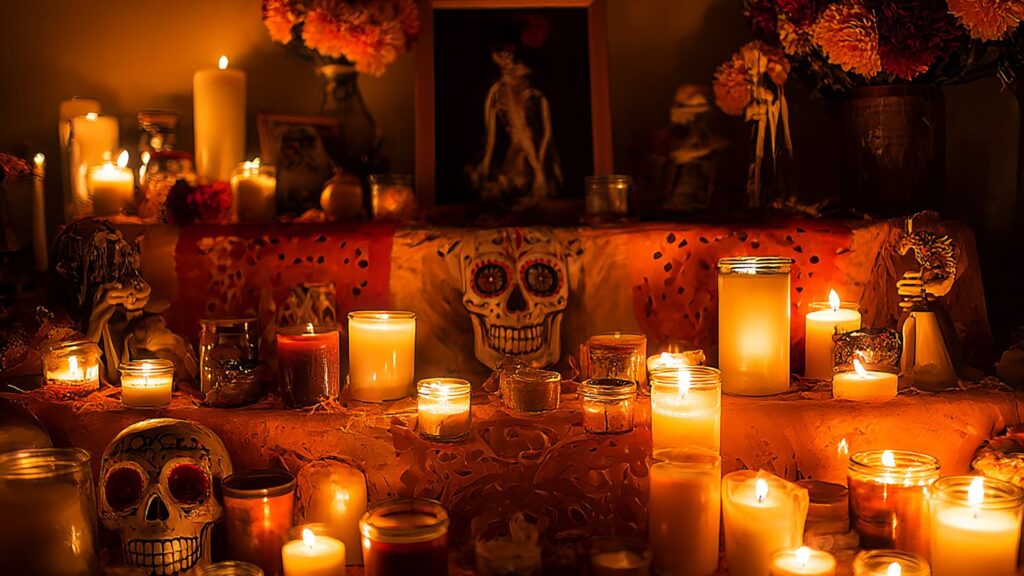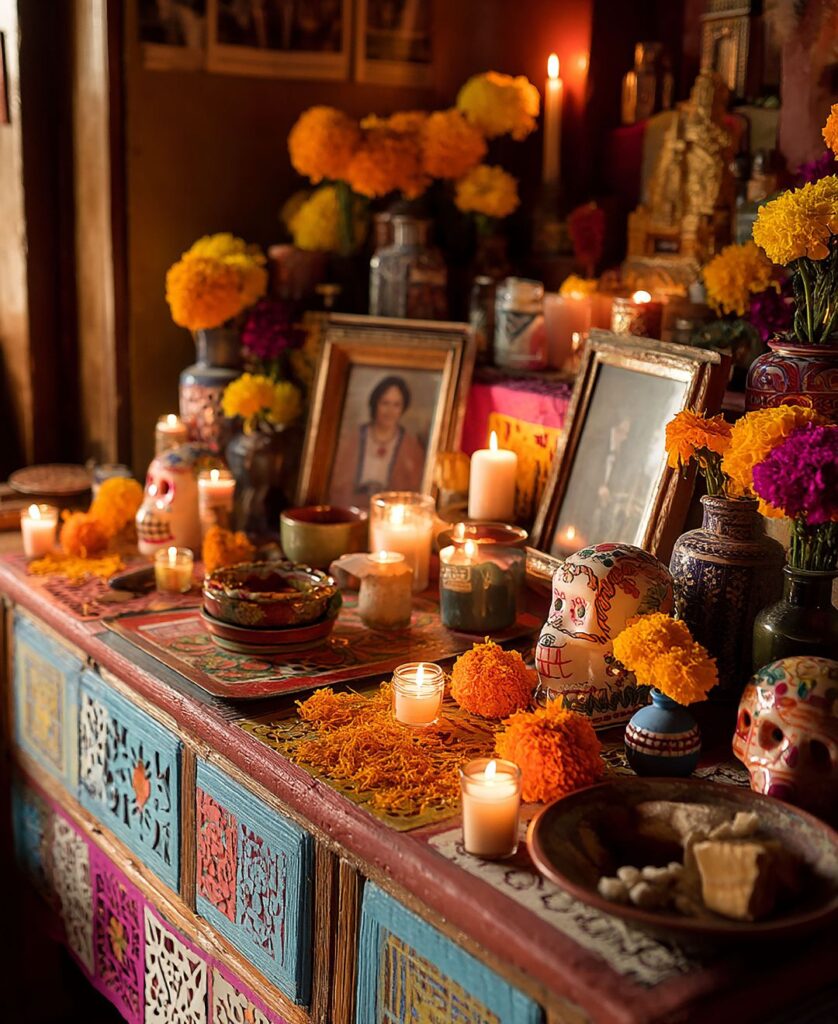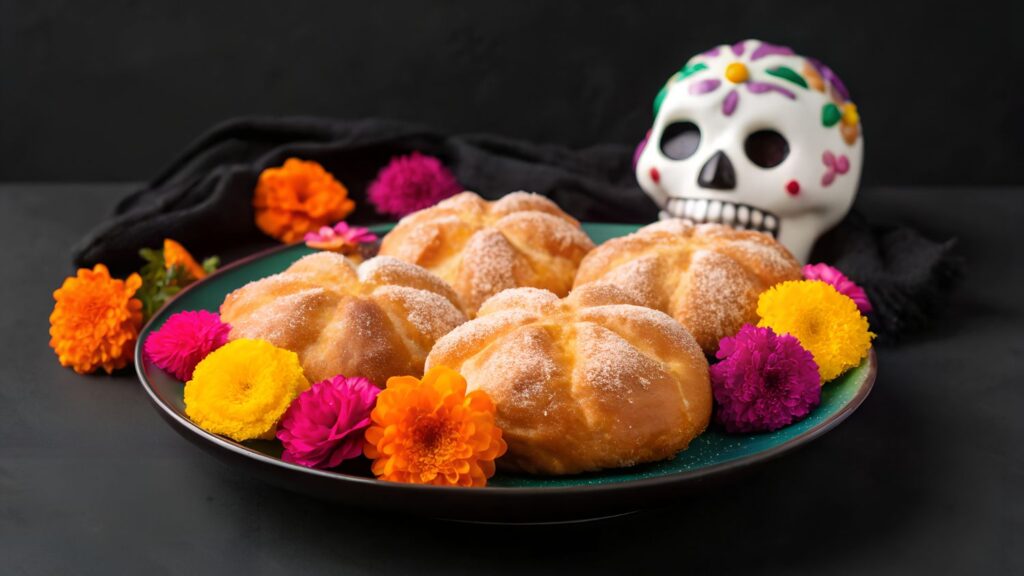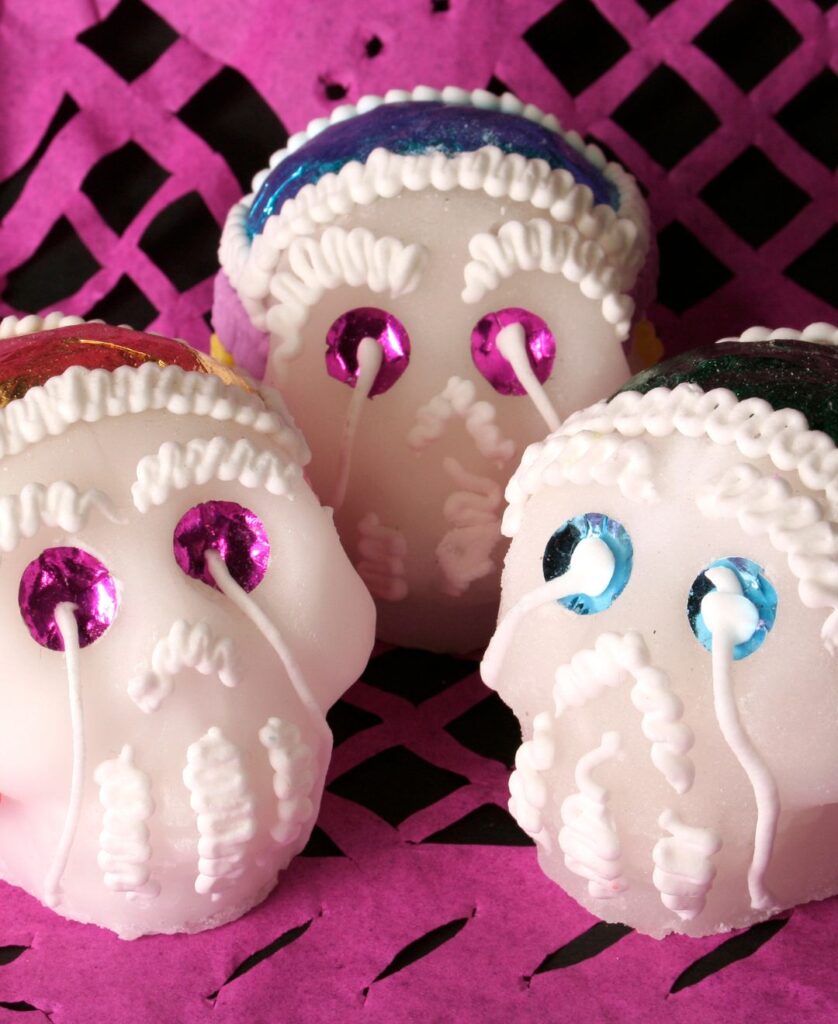Spooky season is upon us, and as pumpkins and candy fill the shelves, Day of the Dead flavors are joining the mix, bringing a deeper sense of tradition and color to late-October celebrations. While Halloween still reigns supreme, with Americans spending an estimated $11.6 billion on it in 2024, including $3.5 billion on candy, another holiday is rising in recognition. The Mexican El Día de los Muertos, or Day of the Dead, continues to capture the imagination of millions, blending remembrance, food, and festivity in ways that are reshaping how this season is celebrated across the U.S.

Although the abundance of skull-painted faces, the overflowing bright yellowish-orange of Marigolds, and, naturally, its location on the calendar might draw instant comparisons to Halloween, the Day of the Dead is its own distinct and memorable holiday with unique costumes, traditions, and, yes, food.
Day of the Dead Flavors: Tasting the Traditions
Following directly after Halloween, Día de los Muertos falls on November 1st and 2nd and blends indigenous Aztec traditions with the Catholic feast days of All Saints Day and All Souls Day, which also fall on those dates. Far from somber, it is a time to honor and celebrate the lives of loved ones who have passed, with visits to cemeteries, vibrantly decorated home altars (ofrendas) covered with flowers, and a mix of traditional foods and some of the loved one’s favorite foods.

“One thing that is really special about this holiday is that while every ofrenda will have things in common, each one will have its own unique way of celebrating that person. The foods that might be on one to honor someone’s grandfather, could be very different from their neighbor’s, and so on,” says Jaime Osnaya, Sr. Digital & Brand Communications Specialist at Edlong.
Local fruits like pumpkin, nisperos (loquats), tejocotes, oranges, and bananas, and savory dishes like mole, pozole, tamales, sopas, and many other delicacies are customary on the holiday. And with interest in Latin American cuisine, Mexican in particular, at an all-time high, these provide an incredible way to give people a literal taste of the culture surrounding the Day of the Dead.
Yet, while not exactly candy, like Halloween, it’s still the sweets that steal the show and offer opportunities for developers to help consumers experience aspects of this incredible holiday for themselves. Even though Day of the Dead flavors like churros, Mexican hot chocolate, horchata, and others that have already begun to spread into other markets are familiar sights at these celebrations, we wanted to take a moment to highlight three of this holiday’s signature sweets.
Pan de Muerto
This sweet bread decorated with bones shaped from its dough is easily one of the most iconic Day of the Dead foods. Not quite the same as challah or brioche, this soft, fluffy bread is made with butter, often with orange flower water or orange zest (azahar), and is dusted with sugar for a simple yet complex dessert that’s worth waiting all year for. “This is easily my favorite food from Dia de los Muertos,” says Silvia Schnicker, Edlong’s Director of Marketing.
“It has the perfect blend of butteriness with the unmistakable orange blossom notes, almost similar to an orange tea, along with the sprinkled sugar and sometimes hints of cinnamon.; it really is something special.” Over the years, more and more varieties of pan de muerto, including those filled with everything from chocolate to dulce de leche, have become more common. Local bakeries have also begun to experiment with their own indulgent and snack-inspired Day of the Dead flavors like cookies and cream versions of pan de muerto.

Calabaza en Tacho
Nothing says fall holiday like pumpkin. While a far cry from the tastes of the classic American pumpkin pies or the perennially popular PSLs, Calabza en Tacho is no less an addictive fall favorite. Great for breakfast, dessert, or even a snack, these treats are made from simple cooked pumpkin slices, glazed with piloncilo, a dark brown, unrefined sugarcane sugar, and sometimes orange zest and cinnamon. Amazing on its own, some like to take this ofrenda staple to another level by adding everything from raisins to guava, and even pepitas, the roasted seeds from the pumpkin itself.
Calaveritas de Azúcar
Possibly the most recognizable symbol of Dia de los Muertos is the often brightly decorated calaveras de Azúcar, or sugar skulls.
Starting the Day as an altar decoration and ending the festivities as a sugar snack, calaveras are a delicious yet straightforward indulgence that embraces tradition while allowing for Day of the Dead flavor experimentation.
Recipes may vary, but at its most basic, these sugar skulls are made from a combination of sugar (granulated and/or powdered sugar), eggs (often meringue powder), and water that is made into a paste and molded into its iconic shape before being decorated in all sorts of beautiful hues.

Though most common in this traditional form, calaveras can also be found infused with lemon juice and other plant extracts, or in indulgent varieties such as caramel, chocolate, vanilla, dulce de leche, and tamarind.
From Tradition to Trending: Day of the Dead Flavors
The growing influence of not only Mexican and Latin American cuisines, but also a demand for authenticity, as well as the aesthetic similarities to local holidays, make these and other Day of the Dead foods an incredible source of inspiration.
Whether it’s the iconic skulls, the indulgent Day of the Dead flavors, or connecting the stories they tell, it’s not a reach to say that tastes of Dia de los Muertos have the potential to become fall favorites well beyond the borders of Mexico.
Feliz Día de los Muertos from all of the Edlong Family.
Topics: Snacks & bakerySweet dairy flavorsSweet Spot
Resource Type: Article
Resource Region: LATAM